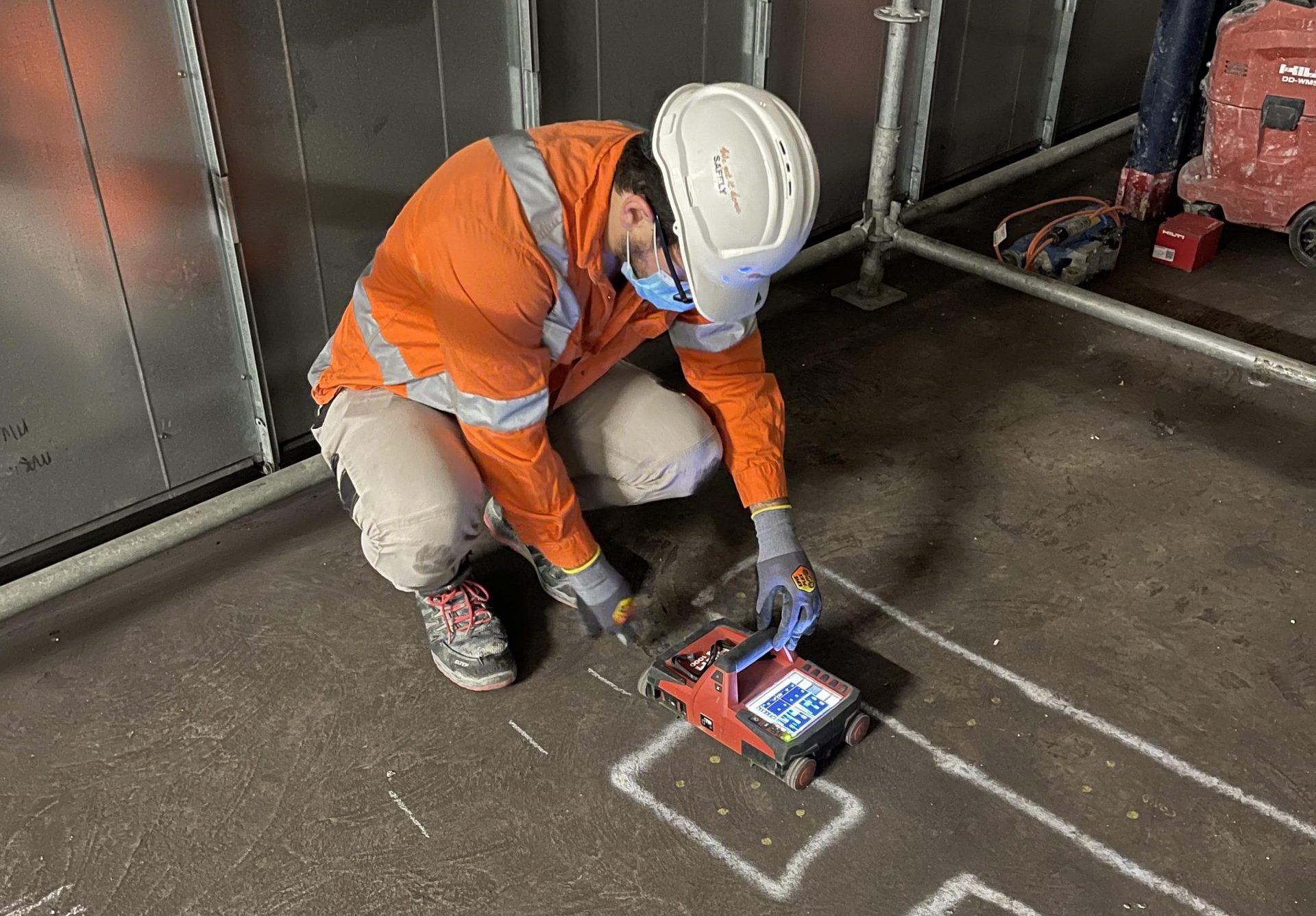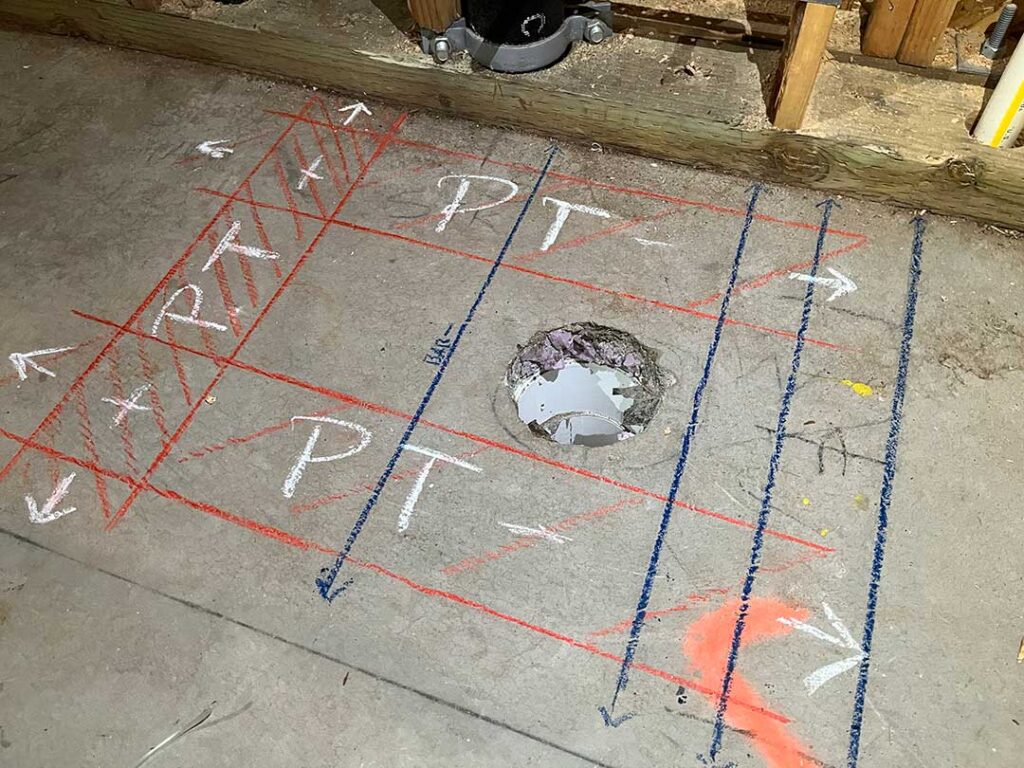Expert Tips for Ideal Concrete Scanning Results
Unveil the Transformative Power of Concrete Scanning in Taking Full Advantage Of Effectiveness and Security
Concrete scanning has actually emerged as a critical tool in the building and construction market, providing unequaled advantages in boosting project effectiveness and ensuring safety and security standards. The transformative power of concrete scanning lies in its ability to offer real-time data and comprehensive understandings, revolutionizing exactly how tasks are planned and executed.
Significance of Concrete Scanning
Guaranteeing the architectural stability and security of construction tasks starts with the crucial action of performing thorough concrete scanning. Concrete scanning is a non-destructive method utilized to find and map subsurface components within concrete structures. This process is important in recognizing prospective hazards, such as rebar, post-tension cords, and avenues, that may be hidden within the concrete. By using innovative technologies like ground-penetrating radar (GPR) and electromagnetic induction, building teams can properly locate these elements without creating any kind of damage to the framework.
Furthermore, concrete scanning aids in optimizing project timelines and budget by avoiding unanticipated expenses and hold-ups that might develop due to unanticipated obstructions within the concrete. Ultimately, investing in thorough concrete scanning is a proactive approach that boosts both performance and safety and security in building jobs.
Exactly How Concrete Scanning Works
Concrete scanning operates as a vital tool in construction tasks by using sophisticated technologies to spot and map subsurface elements without causing architectural damages. Ground Permeating Radar (GPR) and Electromagnetic Induction (EMI) are 2 key techniques utilized in concrete scanning. GPR jobs by sending out high-frequency radar pulses into the surface area, which recuperate when they experience subsurface objects or voids. The time considered the signal to return suggests the depth and place of the objects. EMI, on the various other hand, utilizes magnetic fields to recognize differences in material compositions, such as identifying rebar or avenues within concrete frameworks.
Throughout the scanning process, the data accumulated is assessed in real-time, permitting immediate identification of prospective dangers or challenges underneath the surface. This details help in decision-making, making sure that construction tasks proceed securely and effectively. In addition, 3D imaging software application can be made use of to develop comprehensive maps of the subsurface components, even more enhancing task planning and implementation. By employing these innovative innovations, concrete scanning significantly reduces the danger of expensive problems and injuries on construction sites.
Advantages of Concrete Scanning
Using sophisticated scanning modern technologies in building and construction tasks supplies a multitude of advantages, enhancing both effectiveness and safety on-site. Among the main benefits of concrete scanning is the capability to discover and find embedded objects such as rebar, post-tension cables, and avenues properly. By identifying these elements before drilling or reducing into concrete structures, the risk of unexpected strikes is dramatically minimized, avoiding potential injuries to workers and damages to the structure itself. In addition, concrete scanning aids in planning and making much more effectively, as it provides exact details about the location and deepness of structural parts.

Study: Concrete Scanning Success

In one more situation, a construction business made use of 3D concrete scanning to assess the problem of aging concrete frameworks in a historic structure. The in-depth scans offered valuable understandings into the extent of damage and aided prioritize upkeep initiatives efficiently. By proactively attending to locations of problem recognized through scanning, the company was able to expand the lifespan of the structure and ensure owner safety.
These situation studies highlight the transformative power of concrete scanning in boosting effectiveness, accuracy, and security in building click over here now jobs.
Carrying Out Concrete Scanning in Projects
Applying innovative scanning modern technologies during construction projects has ended up being progressively important for enhancing accuracy and safety. By incorporating concrete scanning into job planning and execution, building teams can identify potential dangers, such as rebar or post-tension cords, hidden within concrete structures. This proactive approach minimizes the risk of mishaps, delays, and pricey rework, eventually leading to extra effective project timelines and budgets.
To apply concrete scanning properly, task managers should collaborate very closely with knowledgeable scanning experts to figure out one of the most appropriate scanning strategies for the specific job needs. Engaging scanning professionals from the onset of a job allows the team to develop thorough scanning plans that resolve crucial areas of problem and make sure detailed information collection.
Moreover, including concrete scanning into normal project operations can enhance decision-making processes, as real-time check data provides prompt insights right into the condition of concrete frameworks - Concrete Scanning. This data-driven method helps with informed analytical and allows teams to make adjustments promptly, cultivating a society of performance and safety and security throughout the job lifecycle

Conclusion
In final thought, concrete scanning plays a vital role in improving performance and safety in helpful hints building jobs. By making use of innovative technology to discover and map out underlying frameworks within concrete, this procedure aids to avoid costly mistakes, guarantee structural stability, and decrease threats on website. With the capability to reveal hidden elements and offer precise data, concrete scanning shows to be a useful device for enhancing task end results and optimizing total success.
Concrete scanning is a non-destructive approach made use of to identify and map subsurface components within concrete frameworks. In addition, concrete scanning aids in maximizing task timelines and budget by avoiding unanticipated prices and hold-ups that might develop due to unpredicted blockages within the concrete. One significant situation study involves a large-scale renovation task where concrete scanning played an essential role in ensuring task success.In one more case, a construction firm used 3D concrete scanning to examine the condition of maturing concrete structures in a historic building. By incorporating concrete scanning into project preparation and execution, construction groups can determine potential threats, such as rebar or post-tension wires, hidden within concrete structures.